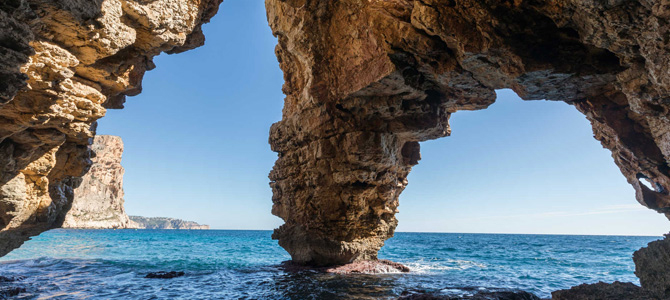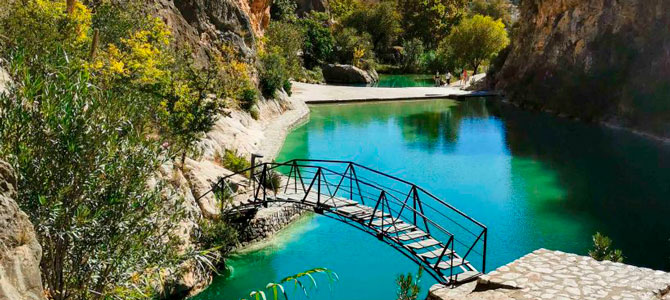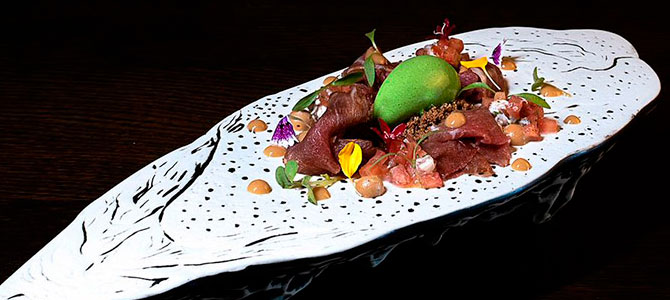The Fiestas de la Patrona in Pollença, a municipality located on the island of Mallorca, is a celebration that combines religious devotion, history and a strong sense of community. These festivities are held in honour of the Virgin of the Angels, the patron saint of Pollença, and is one of the most important events on the island of Mallorca. With a rich cultural heritage and strong community involvement, the Fiestas de la Patrona are notable for their high participation.
History and Origins
The Fiestas de la Patrona have their roots in medieval times, when devotion to the Virgin of the Angels was consolidated in Pollença. The Virgin is seen as a protector of the town, and her veneration has been passed down from generation to generation. The festivity is celebrated on 2 August, coinciding with the Day of Our Lady of the Angels.
One of the most emblematic events of this festival is the re-enactment of the mock battle between the Moors and Christians. This event commemorates a historic victory that took place from the 30th to the 31st of May 1550, when the inhabitants of Pollença, led by Joan Mas, repelled an attack by pirates led by Dragut. The battle is a reminder of the bravery and fighting spirit of the people of Pollença.
Preparations and festive atmosphere
Preparations for the Fiestas de la Patrona begin weeks before the 2nd of August. The streets of Pollença are decorated with flags and props, creating a festive atmosphere.
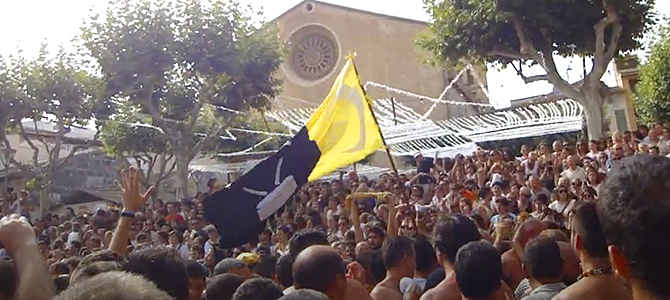
2 August is a day full of activities that culminate in the most eagerly awaited moment: the departure and the call of Joan Mas, which signals the start of the battle. Various acts and events take place throughout this festivity, and here are the keys to make sure you don’t miss any of them.
L’Alborada
The festive day begins at five in the morning, after the verbena, when the brass band plays the emotional rendition of ‘L’Alborada’ by the town’s brass band. The celebration continues with the mass in honour of the Mare de Déu dels Àngels at 11.00 a.m., and the traditional dance of the cossiers, a group of Mallorcan folk dancers, which plays an important role in these celebrations.
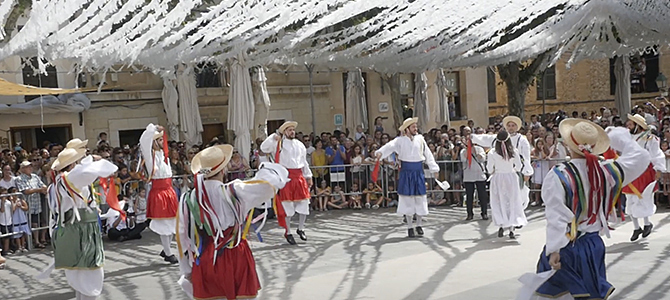
Afterwards, it is time to recharge, and it is common to enjoy a meal with the family or groups of friends who will later take part in the ‘battle’.
The Battle of the Moors and Christians
The highlight of the festivities is the mock battle between Moors and Christians. This event attracts thousands of spectators, both locals and tourists, who gather to witness this theatrical representation of a crucial moment in the history of Pollença. The Mallorcans dress in white, representing the Christians, and the pirates in colourful, patterned clothing.
At around 4 p.m., people begin to gather in the town square where, at 5 p.m., the Banda de Cornetes i Tambors del Soldà (Soldà Drum and Bugle Band) calls the pirates to get ready.
The re-enactment of the battle is a spectacle full of emotion and drama. The “Christians”, led by the figure of Joan Mas, confront the “Moors”, representing the invasion of the Ottoman corsairs.
The participants in the battle begin to take up positions in the Carrer Major in Pollença. The Christians took up positions at the beginning of the street, in front of what was once the house of Joan Mas. At 19:00 hours, Joan Mas, the leader of the Christian side dressed in white, makes the emotional appeal to the Pollencins.
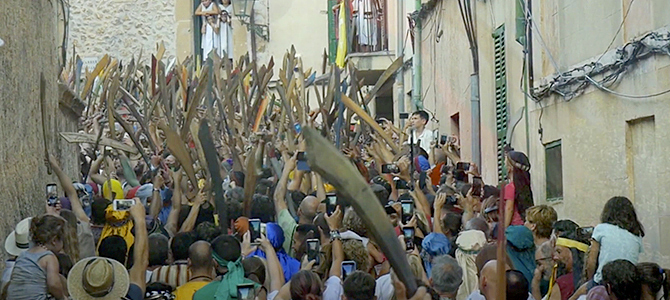
This is one of the most moving moments, Joan Mas makes a famous cry imploring the Virgin of the Angels: “assistiu-mos que els pirates ja són aquí” (Help us, the pirates are already here).
This shout initiates the confrontation. The Christians advance along the main street, pushing back Dragut’s troops, while various battles develop between the protagonists of the mock battle.
At the height of Sant Jordi, the group of women who take part in the battle joins the ranks of the Christians, a tradition recovered in 2019. The leading role of women in the Moors and Christians of Pollença dates back to the beginnings of this performance, around 1857. However, history took this role away from them in 1882, when the celebration of the battle, which had been interrupted in 1864 due to a major economic crisis, was resumed, but since then it has only been performed by men.
The Moors retreat along the Calle Mayor and, on reaching Can Nogués, the battle is joined by l’Ajuntament Vella, a character that represents the old governing body of the University in Mallorca. When they reach the church of Sant Jordi, another battle takes place, symbolising the liberation of the women, men and children who had been imprisoned by the Moors.
The drill ends at the Ca n’Escarrinxo camp, located on the way out of the village towards Port de Pollença. The Christians await the arrival of the pirate troops, who rush into the camp. Several clashes take place until Joan Mas gets the corsair flag. He then went to the Parish Church of Pollença, where the Te Deum was sung in thanksgiving for the victory. On leaving the church, the ‘Visca Pollença’ is sung, marking the end of the festivities.
The result? The people of Pollença won thanks to Joan Mas, who led the fight against the adversaries, who were far superior in numbers: 1,500 men who could not defeat the brave local inhabitants.

The Legacy of Festivities
What makes the Fiestas de la Patrona truly special is the active participation of the community. From the youngest to the oldest, everyone has a role in the festivities. Families come together to decorate the streets, prepare traditional foods and participate in cultural events.
In addition, the Fiestas de la Patrona are an opportunity for Pollencins who live outside the town to return home and reunite with their loved ones. This reunion strengthens family and community ties, reaffirming the identity and sense of belonging to Pollença.
The Fiestas de la Patrona in Pollença are not only a tribute to the Virgin of the Angels, but also a reminder of the town’s rich history and traditions. Each year, the festivities are renewed with the same passion and devotion, keeping the ancestral customs alive.
These festivities attract tourists from all over the world who come to experience the authenticity and fervour of the celebrations. Visitors are impressed by the hospitality and festive spirit of the Pollencins and take away unforgettable memories.




